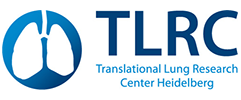![[Translate to English:]](/fileadmin/user_upload/Aktuelles/I_201509290049694.jpg)
Extended analysis of tumour DNA in patients’ blood could improve therapy control in lung cancer
Analysing copy number variations (CNVs) of tumour DNA extracted from blood samples of patients with ALK-positive non-small-cell lung cancer can provide valuable information on therapy response and has the potential to improve therapy control. This was shown in a study by TLRC-researchers published in the journal EBioMedicine.
Targeted therapy with so-called tyrosine kinase inhibitors (TKI) can significantly improve the life expectancy of patients with ALK-positive non-small-cell lung cancer. However, not all patients respond to TKIs, and physicians need to identify these persons as soon as possible in order to understand the cause of treatment failure to timely select other treatment options.
The genetic material of active cancer cells is undergoing continuous changes, and single nucleotide mutations accumulate over time. Additionally, structural rearrangements of chromosomes result in large sections of the DNA to be amplified or lost – causing variations in their copy number (CNV). Mutations as well as CNVs can lead to accelerated tumour growth and thus cause a therapy to fail. A non-invasive way to monitor such changes is offered by liquid biopsies: Thereby, tumour DNA, which is often circulating in the blood of cancer patients, is analysed for genetic changes at various time points throughout the course of a therapy.
A team of DZL scientists of the German Cancer Research Center (DKFZ), the Thoraxklinik Heidelberg, the University Hospital Heidelberg and the Lung Clinic Großhansdorf have developed an approach to extract more information from liquid biopsies. Until now, scientists looked primarily for mutated tumour DNA by targeted DNA sequencing. The group extended this approach by an additional analysis of CNVs. In total, they analysed 271 blood samples of 73 patients undergoing therapy with TKI. They found that — just like the number of mutations –CNVs correlated with therapy success as well. The higher the detected number of CNVs in the tumour DNA, the more likely the therapy was to fail. Also, structurally rearranged tumour DNA contained genes associated with enhanced tumour growth, providing information on potential targets for subsequent therapies.
The scientists conclude that the analysis of CNVs provides valuable additional information to the targeted sequencing of tumour DNA. Using the combined approach, it might be possible to discover treatment failure sooner and to initiate targeted next-line therapies earlier.
/dpd
Further information:
Longitudinal therapy monitoring of ALK-positive lung cancer by combined copy number and targeted mutation profiling of cell-free DNA. Dietz S, Christopoulos P, Yuan Z, Angeles AK, Gu L, Volckmar AL, Ogrodnik SJ, Janke F, Fratte CD, Zemojtel T, Schneider MA, Kazdal D, Endris V, Meister M, Muley T, Cecchin E, Reck M, Schlesner M, Thomas M, Stenzinger A, Sültmann H. EBioMedicine. 2020 Nov 5;62:103103. doi: 10.1016/j.ebiom.2020.103103. Online ahead of print. PMID: 33161228

